From ‘Madonna’ to ‘Earth, Water, and Air’: The artistic legacy of Rokeya Sultana
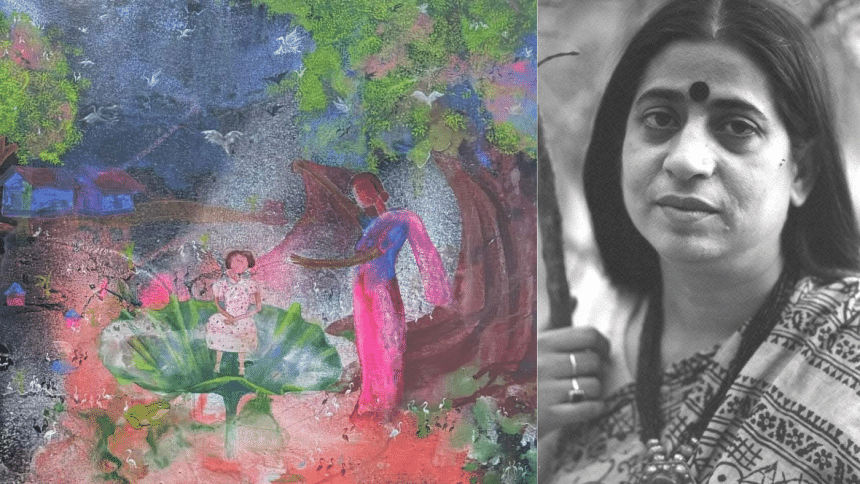
Renowned artist Professor Rokeya Sultana has been awarded the prestigious Ekushey Padak this year for her outstanding contributions to fine art. As an internationally recognised artist and a Fulbright Fellow, her deep and unique artistic expression has made her one of the most significant contemporary painters in South Asia.
Rokeya's artistic oeuvre is distinguished by her unique style that seamlessly blends fluidity and transparency, often focusing on femininity to convey the multifaceted experiences of womanhood. Her acclaimed series, including "Madonna", "Bonobibi", "Flaming Desire", "Fata Morgana", and "Relation", delve deep into themes of joy, struggle, and the essence of humanity.
Beyond her creations, she has been a pivotal figure in nurturing the forthcoming generation of artists. As a professor at the Department of Printmaking in the Faculty of Fine Art, University of Dhaka, she has mentored countless students, fostering a culture of creativity and critical thought.
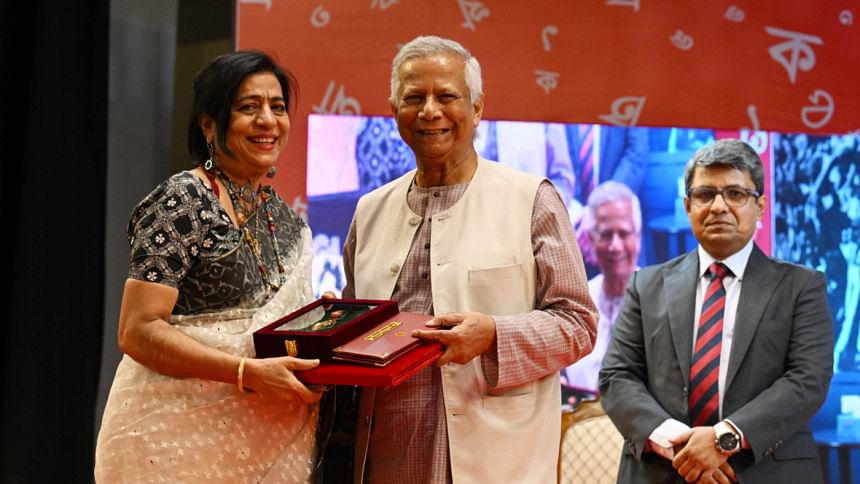
Early life, education, and career
Rokeya held a deep passion for art since the days of her girlhood, which was further shaped by her experiences living in different countries and being a refugee during the 1971 Bangladesh Liberation War. These experiences later influenced her artwork. She studied at the Faculty of Fine Arts, University of Dhaka, and at Santiniketan, where she mastered various artistic techniques. Her journey took her to the international stage, with a residency at L'Atelier Lacourière et Frélaut in Paris, which enriched her artistic career.
Rokeya Sultana has received numerous national and international awards, including recognition at the ninth Asian Biennale, the National Art Exhibition (Dhaka), and the third Bharat Bhavan Biennale (India). Her works have been exhibited in many countries, including Poland, Germany, Morocco, Oman, France, Iran, Egypt, Turkey, Taiwan, Nepal, Korea, Denmark, Pakistan, India, and the USA (Denver, Wyoming, New York), among others. Each exhibition has challenged viewers to see art in a new way.
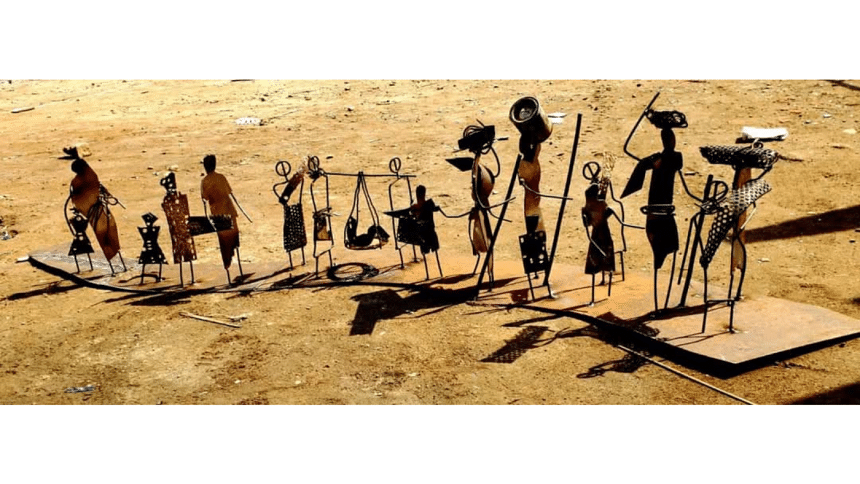
Artistic style and themes
Rokeya moves seamlessly between abstract and figurative art. She uses different mediums—canvas, printmaking, and metal sculptures—but always ensures that the medium enhances the message, not the other way around. Her tools, from paintbrushes to printmaking rollers and welding electrodes, become an extension of her emotions and thoughts.
One of her standout works is "Fata Morgana", where she visually represents a mirage, capturing the contrast between human desires, dreams, and reality. In "Madonna" and "Earth, Water, Air", Rokeya attempts to break free from personal and societal illusions. Albeit these works differ in their artistic approach, both are deeply personal reflections of her journey as an artist and a human being.
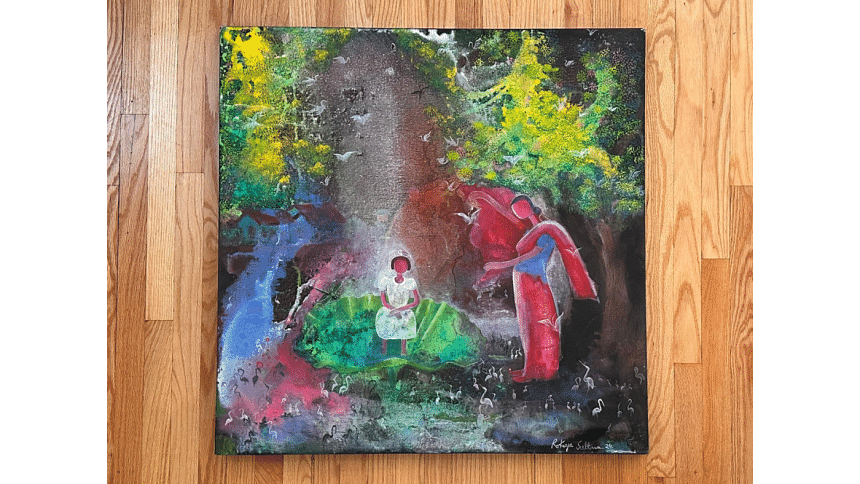
'Madonna': The struggles of a woman
Rokeya's "Madonna" series portrays the struggles of a middle-class mother. Through these paintings, she depicts a working mother battling societal, economic, and environmental challenges to raise her daughter as an independent and strong individual. It captures the dual pressures of maternal love and responsibility on one hand and the longing for personal freedom within a restrictive society on the other.
From a feminist perspective, "Madonna" is not just a personal story—it is a powerful statement on women's survival in a patriarchal world. A mother's struggle isn't just for her child; it is also for her dreams, freedom, and identity. "Madonna" embodies this fight, showing both the tenderness of motherhood and the determination to break social barriers.
"Madonna is a movement," Rokeya Sultana asserted in explanation. "She is vulnerable because although she is a peacemaker, she is prepared to fight. She is a symbol for all women. She changes throughout time, but she is forever performing the same role." Rokeya Sultana clarified that "Madonna" is a symbol of protest against an unjust society.
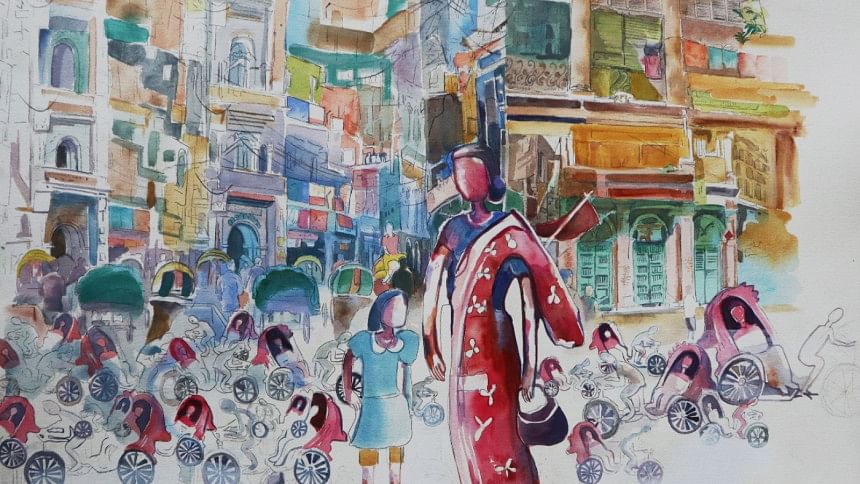
"She is always draped in a magenta saree because I want to show that she is feminine and rooted in our traditions," added the artist. "Her rebellion is more profound. The colour magenta is a symbol of transforming negativity through the feminine psyche. Magenta is on the verge of being an aggressive form of red, but it is softer, more playful, and more positive. 'Madonna' is every girl and every woman."
In global art history, Madonna paintings have inspired many artists. From Leonardo da Vinci's "Madonna of the Rocks" to Raphael's "Sistine Madonna" and Edvard Munch's "Madonna", Rokeya's "Madonna" stands among them with its unique voice.
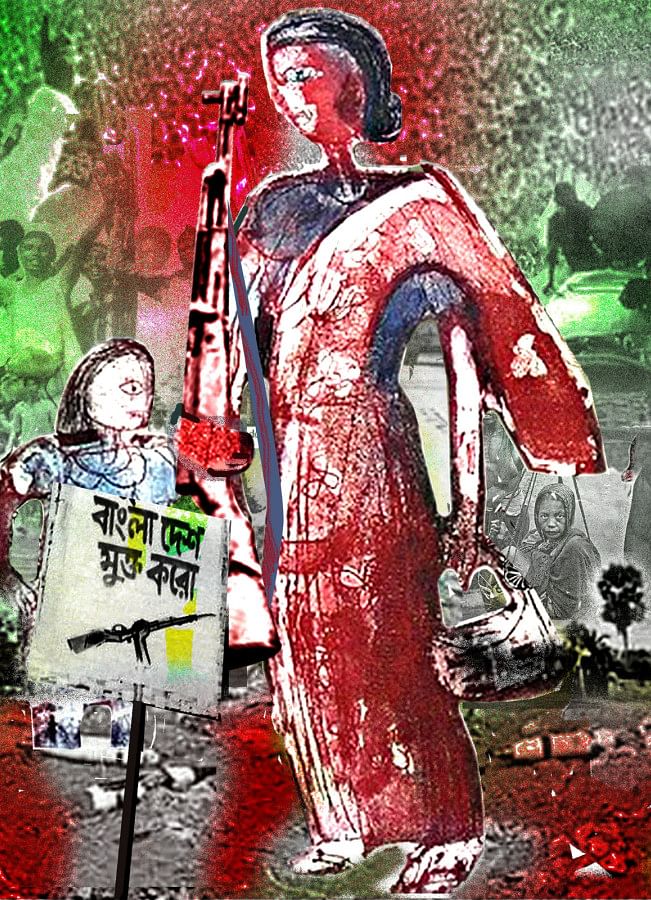
'Earth, Water, Air': A reflection on nature and existence
One of Rokeya's most notable environmental artworks is "Earth, Water, Air", which offers an abstract interpretation of Bangladesh's landscapes. However, beyond beauty, the painting also asks an important question: how are we treating our planet?
Globally, many artists have created works about climate change, such as Antony Gormley's "Earth Body", Olafur Eliasson's "Ice Watch", and Nils Udo's "Water Bench". In this context, Rokeya's "Earth, Water, Air" series holds significance as a multi-layered and versatile body of work—bottled messages floating toward us with a warning. But are we ready to listen?
She highlights the shrinking of land, the loss of rivers and wetlands, and the increasing pollution of air. Her art is not just about capturing nature—it is also a wake-up call.
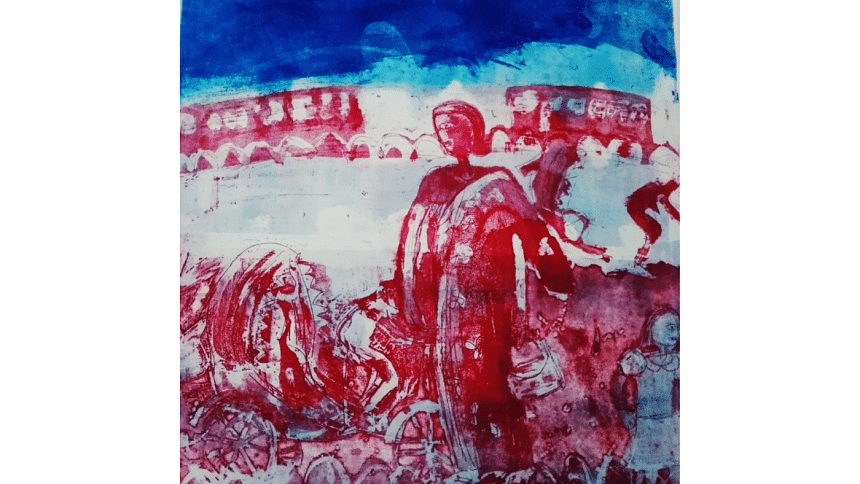
At present, Rokeya divides her time between Dhaka and Sydney, working in her studios in both cities. Her art blends modern and traditional styles, enriching Bangladesh's artistic heritage.
However, she is more than just an artist—she is an ambassador of Bangladeshi art on the global stage. Her paintings are a reflection of society, culture, history, and personal experiences, touching the hearts of art enthusiasts worldwide. Rokeya Sultana is contemporarily making Bangladesh proud on the world stage through her creativity.
The Ekushey Padak 2025 is a testament to Professor Rokeya Sultana's unwavering dedication to the arts and her significant contributions to society. Her journey continues to inspire, embodying the transformative power of art in reflecting and shaping the human experience.

 For all latest news, follow The Daily Star's Google News channel.
For all latest news, follow The Daily Star's Google News channel. 






Comments